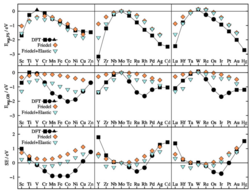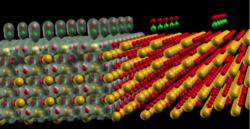Atomistic modeling gives direct insight into the atomic structure and composition of grain boundaries [Scheiber2016], allows one to determine segregation profiles and strength of grain boundaries in metals [Scheiber2015], and to investigate the mechanical and electronic properties of phase boundaries and grain boundaries in materials for microelectronics [Popov2012].
The MCL has a special focus on the analysis of grain boundary strength under the influence of segregation. Using high-throughput calculations it is identified, which solute elements segregate to the grain boundary and how the grain boundary cohesion is affected. This information obtained by means of DFT calculations can be used for designing alloys with grain boundaries that are less prone to fracture [Butrim2015, Li2015, Razumovskiy2015a, Scheiber2016, Scheiber2016a, Scheiber2016b]. The activities of the MCL in this area have resulted in the development of a software tool for describing grain boundary segregation in alloys [SEGROcalc].
Apart from interfaces between solid phases the MCL is also dealing with surfaces of gas sensing materials. In this context, ab-initio techniques are used to investigate the adsorption of molecules on oxide surfaces and its impact on the electronic properties and the conductivity.




















